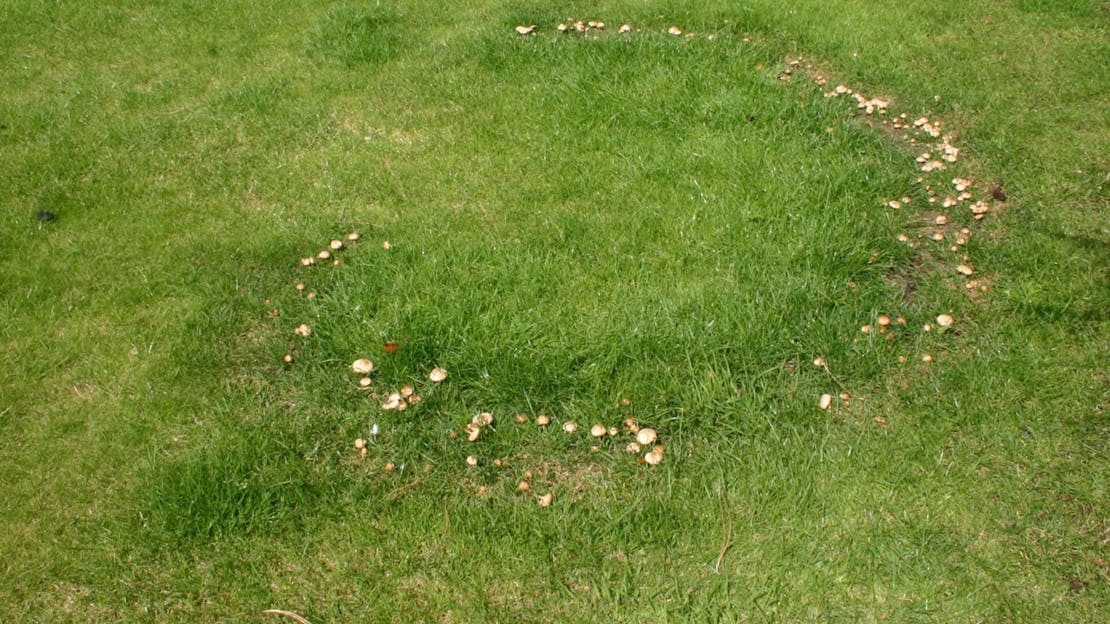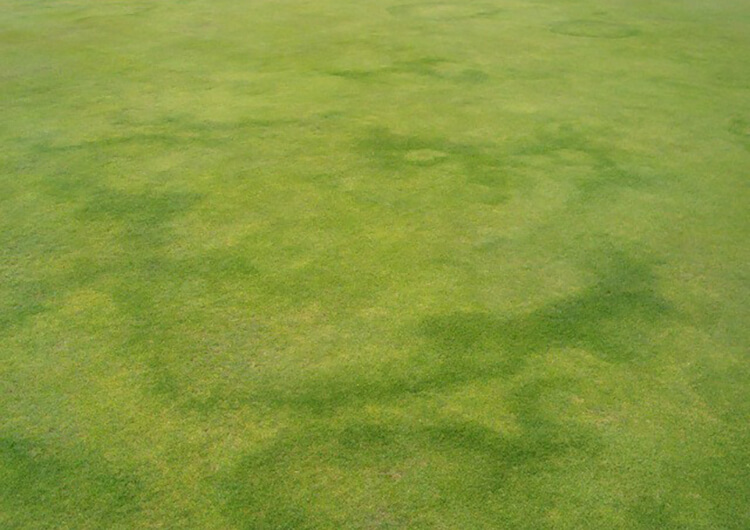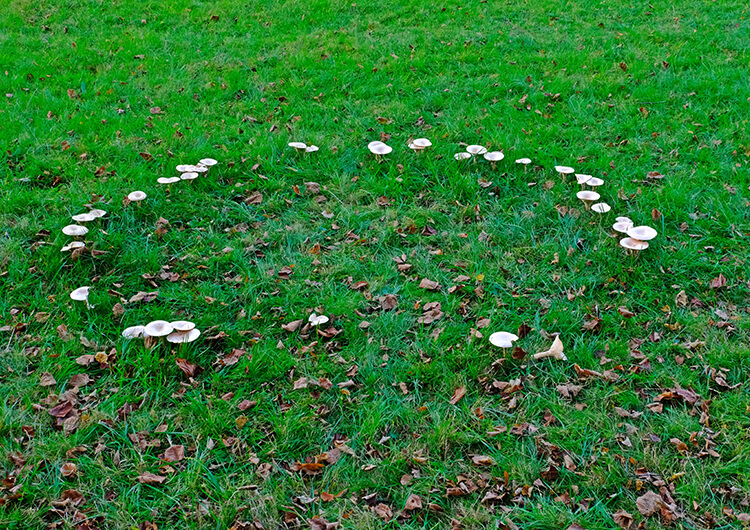
Fairy Rings
Fairy rings appear in lawns in several ways: as rings of toadstools or mushrooms, as a ring of dead grass often covered in moss or rings of lush green grass.
Fairy Rings exist all year round but generally are only obvious in summer or dry conditions. The cause and effects of lawn fairy rings and dry patch are similar though visually they are quite different.
There are three classes of fairy ring:
Type 1 Fairy Ring
This is the most common type of fairy ring (main picture above) and very evident in dry weather as a ring of dead grass bordered by healthy if not luxuriant green grass. The ground below the ring will often be very hard and colonised by moss and/or toadstools giving it the name ‘fairy ring’. If you take a sample of soil you will find it smells musty and will have ‘white specks’ of fungal growth within it.
This fungus causes the soil in the lawn to become water repellent and it is this factor that causes the grass to die off not the fungus attacking the grass plants. Once the ring has dried out it becomes very hard to re-wet and may only finally absorb water during the cold wet autumn winter period. This type of lawn fairy ring can be quite unsightly so it is worth a little effort to reduce the impact.
Remedy 1
Firstly, keep the area well spiked by using lawn aerator shoes, spiker and aerating roller or garden fork making sure to spike the ring AND half a metre on either side of the ring. This will aid water penetration into the ring. Next apply a wetting agent. This helps to break down the water repellent nature of the soil. Finally water the area 5 to 10 days after treatment if no rain arrives.
This treatment is best done in spring prior to drying of the fairy ring. As it relieves the problem rather than killing the fungus the application of wetting agent needs to be repeated several times throughout the drier months of the year. It does work however, and as you only need to treat the ring it is not prohibitive nor of concern to the environment.
Once the lawn has started to respond to your treatment it will become viable again so before weeds colonise the area get some fertiliser in and either over seed or re-turf the surface.
Remedy 2
The treatment starts as above but then a fungicide needs to be applied. The best time is in the spring when the fungus is growing actively. This treatment will need to be done by a professional and as the fungicide is not cheap the cost is going to escalate. There is no guarantee one treatment will work either. I would advise sticking to Remedy 1 above.
Remedy 3
If the ring is so bad with little response from Remedy 1 then you have two choices. Dig the whole lot out going one metre deep and a half metre on either side of the ring. That’s a lot of soil to remove and replace! Alternatively, turn the area of the ring into a flower bed. The fungus does not like disturbed soil so will not grow in the flower bed.
Type 2 Fairy Ring

This fairy ring is seen as a lush ring of very actively growing grass with or without toadstools. These rings are little understood with no known remedies. They can be masked to a certain degree by maintaining a good fertiliser and iron content. Image courtesy of the STRI.
Type 3 Fairy Ring

The simplest of them all. This fairy ring is just a ring of toadstools generally only obvious in spring or autumn in wet weather. There is no remedy though picking, brushing or mowing the fungi to prevent spore production will keep further crops under control.